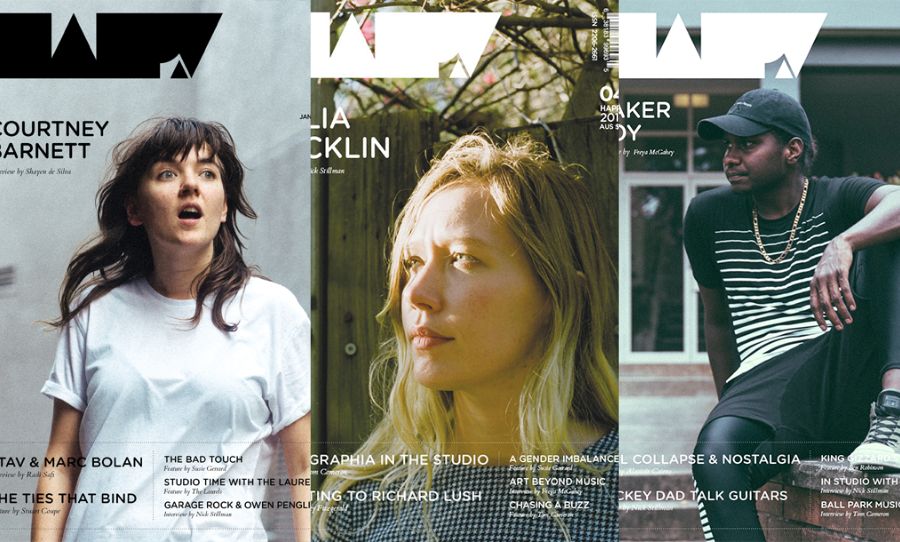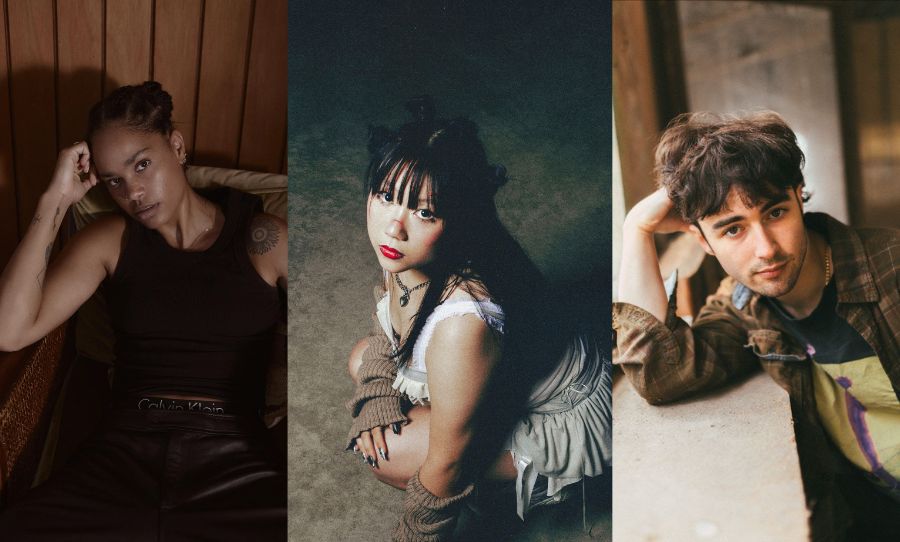The work of multimedia artist Anthony Bartok is at first glance straight-forward, simple and accessible. Beneath the child-like expressions of colour, the elegant combination of minimalist line-drawings paired with text that reveal an infantile view of the modern world.
Yet there is a more complex, heightened and absurdist operation at work here.
We caught up with Anthony to chat about his process, philosophy, and his latest artistic endeavours.
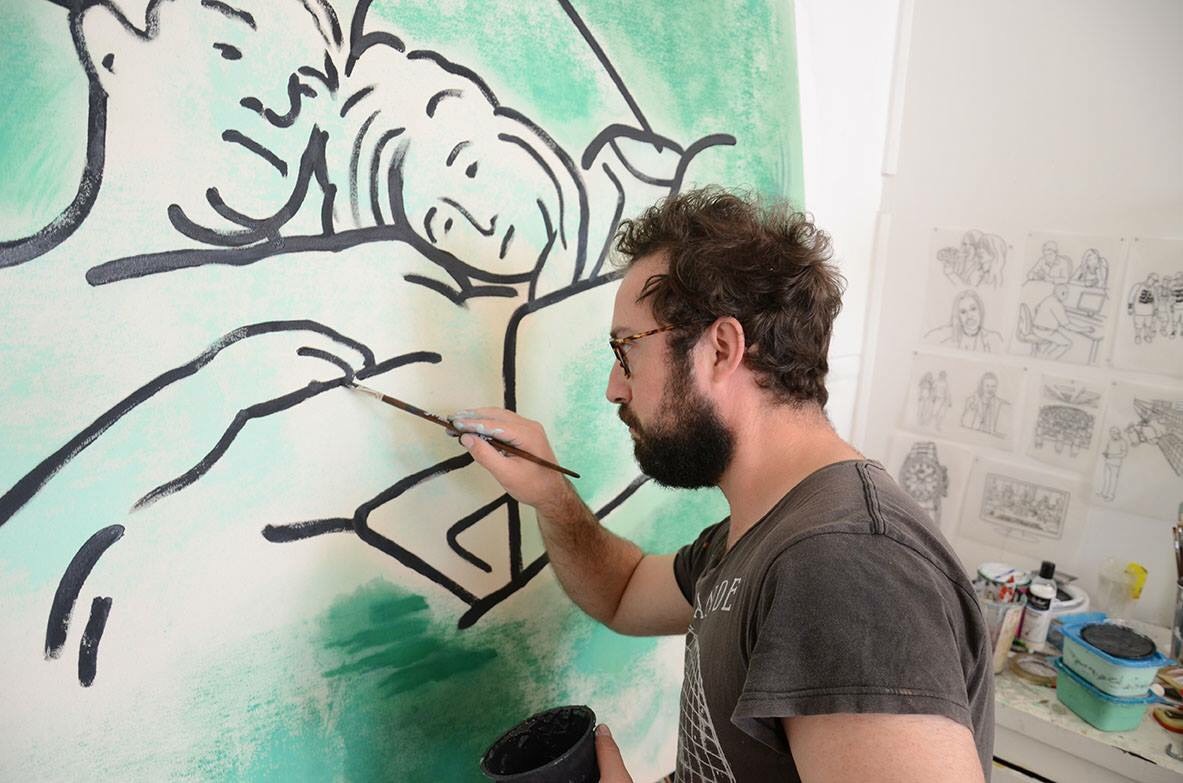
From Facebook activism to hedge fund banality, Anthony Bartok fleshes out the modern world’s most unjust, infuriating and downright irksome contradictions.
HAPPY: Hey Anthony, how’s it going? Could you tell us about something you are currently working on?
ANTHONY: I’m doing some new paintings for an upcoming show. I’m gathering source material from Google images, tracing and scanning and Photoshopping different combinations of those drawings to project onto canvas and paint.

HAPPY: You work in print and paint, how’d you become interested in these mediums?
ANTHONY: I’ve always been a painter until recently doing a BFA at the National Art School and majoring in printmaking. I like that I can re-use images and open myself up to chance and change. Printmaking takes a lot of control away from you because you surrender to the process of it.
It also forces you to think in reverse and back-to-front, and to take what might have been an ‘end point’ in painting and to make it the beginning of something else. Now I design my paintings in more inventive ways, especially things like layering images together.

HAPPY: Your work seemingly adopts the understanding of a child as a means of processing complex, negative realities of contemporary living. By simplifying these insights, what are you hoping to achieve?
ANTHONY: I had the idea come to me to do some social commentary works with text that look like pages from a kid’s book that was an introduction into the world that we live in. I liked how naive language can be used to subvert the subject. Instead of saying “Tim sells shares of low risk hedge funds to people”, I say “Tim makes money by helping rich people who make a lot of money make more money”.
It’s an attack on things that I don’t really like. But I’m not trying to change the world. I have a rare opportunity as an artist to comment, critique and celebrate the world around me. It’s just that outside of my private life, there’s not much to celebrate at the moment.
I want to make a profound statement with banal subjects that doesn’t preach to the converted. It might be a fool’s errand.

HAPPY: Your work displays irony and contradiction, actions that directly oppose the intended outcome, what do you think these contradictions conceal?
ANTHONY: I do like to engineer a contradiction between the image and text. The early drafts of these prints didn’t work because they were too directive, preachy and wordy. The captions need to be completely void of judgement or opinion towards the subject yet totally destroy it. The viewer comes to the correct understanding of the artwork because I have contradicted it in the text.
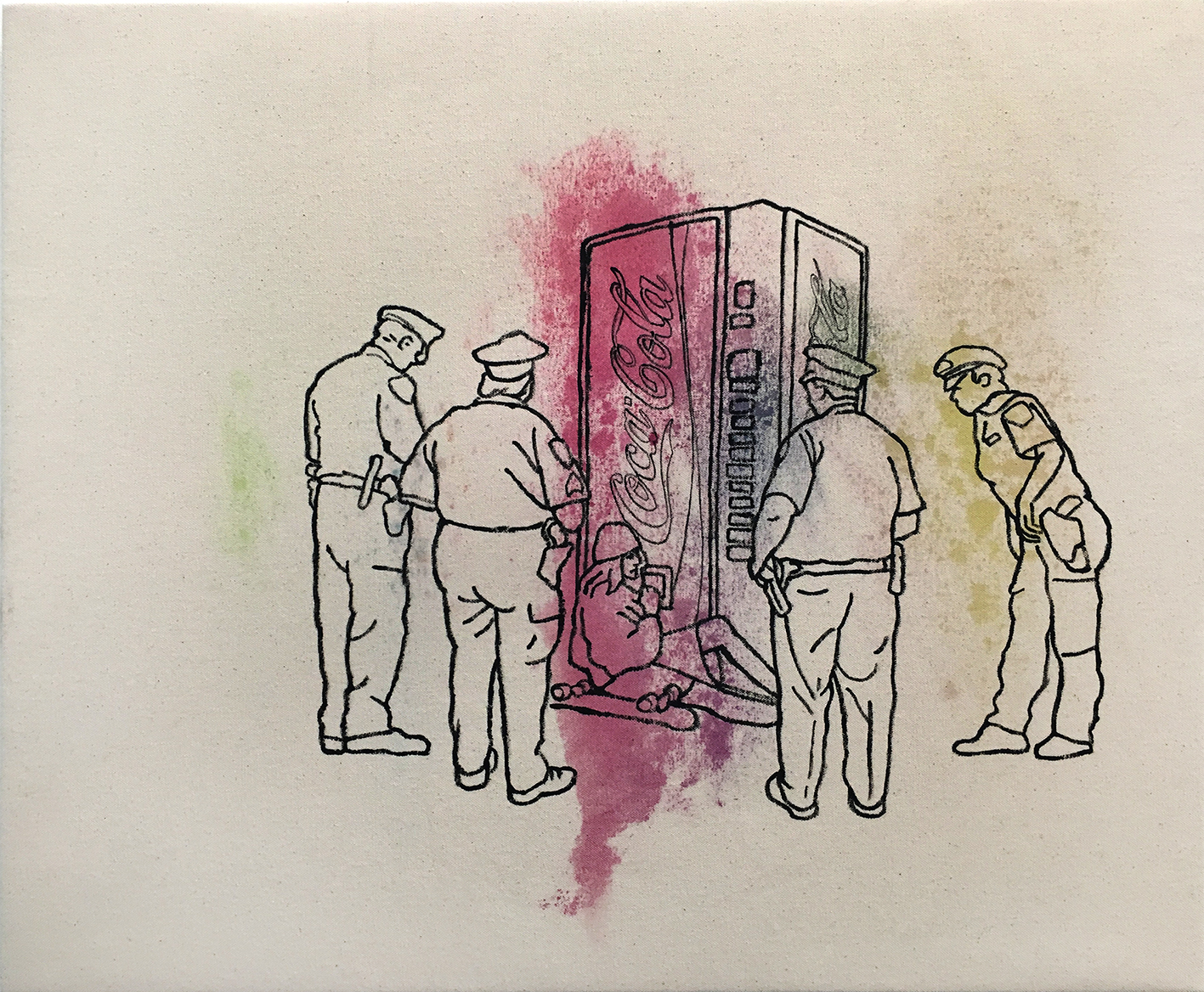
HAPPY: Would you consider yourself a cynic?
ANTHONY: Only in my paintings.
HAPPY: How do you determine the monetary value of a work?
ANTHONY: I price mine according to what I can get away with.
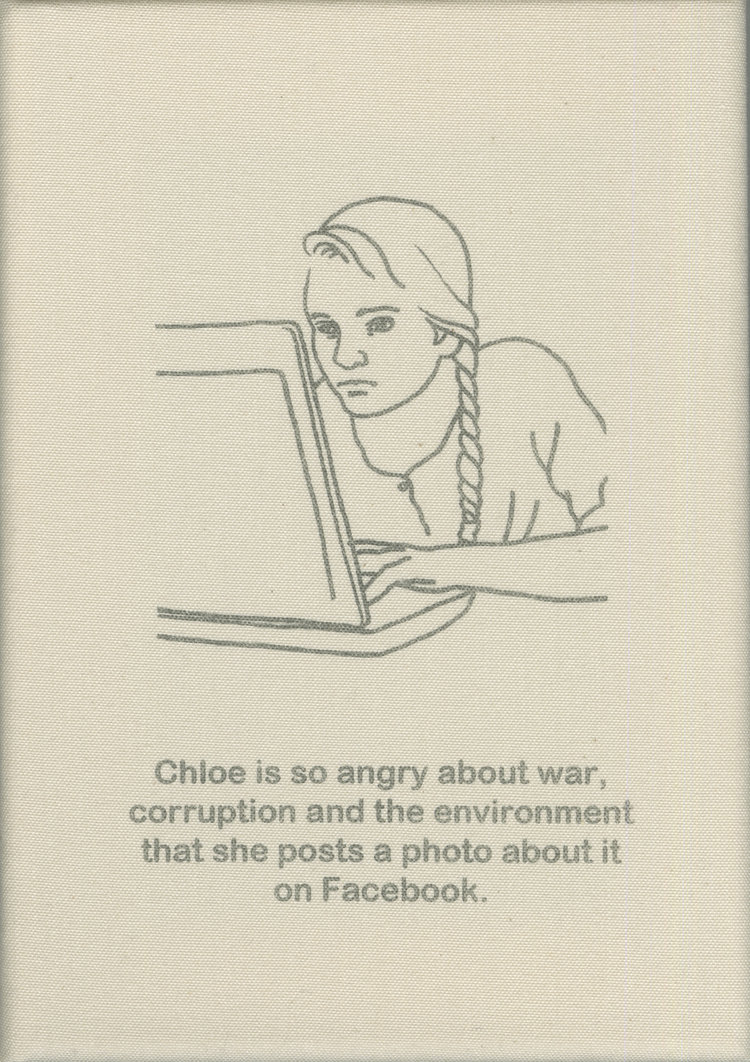
HAPPY: What’s your process like? What helps inspire your work?
ANTHONY: I used to be more expressive and joyful when painting landscapes but now I’m interested in painting conceptually. Pop Art introduced the idea of interpreting the world by holding a mirror up to it. So now I just take inspiration from the wider world and act as a kind of objective tourist, so that familiar conventions appear as ridiculous as they actually are.
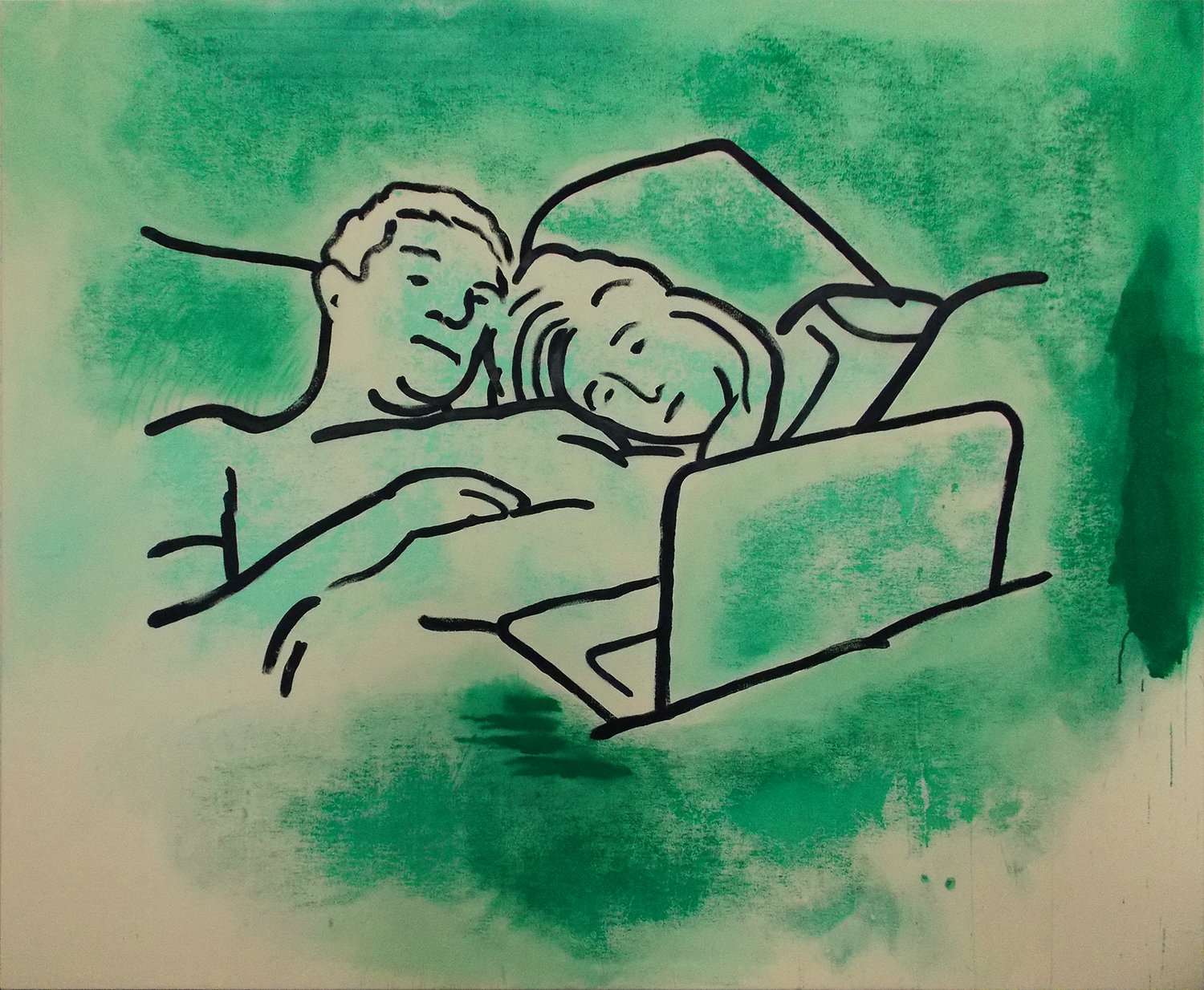
HAPPY: How do you handle creative blocks?
ANTHONY: Luckily, I don’t get them but I do get lazy. I didn’t paint for years after a house fire because I was learning guitar and watching the Sopranos.
HAPPY: And finally, could you tell us a little about your upcoming show?
ANTHONY: It will be a continuation of my recent work. It’s always a surprise and that’s what keeps me interested.
New Paintings opens September 28 at The New Standard Gallery in Surry Hills, running until the October 28.

